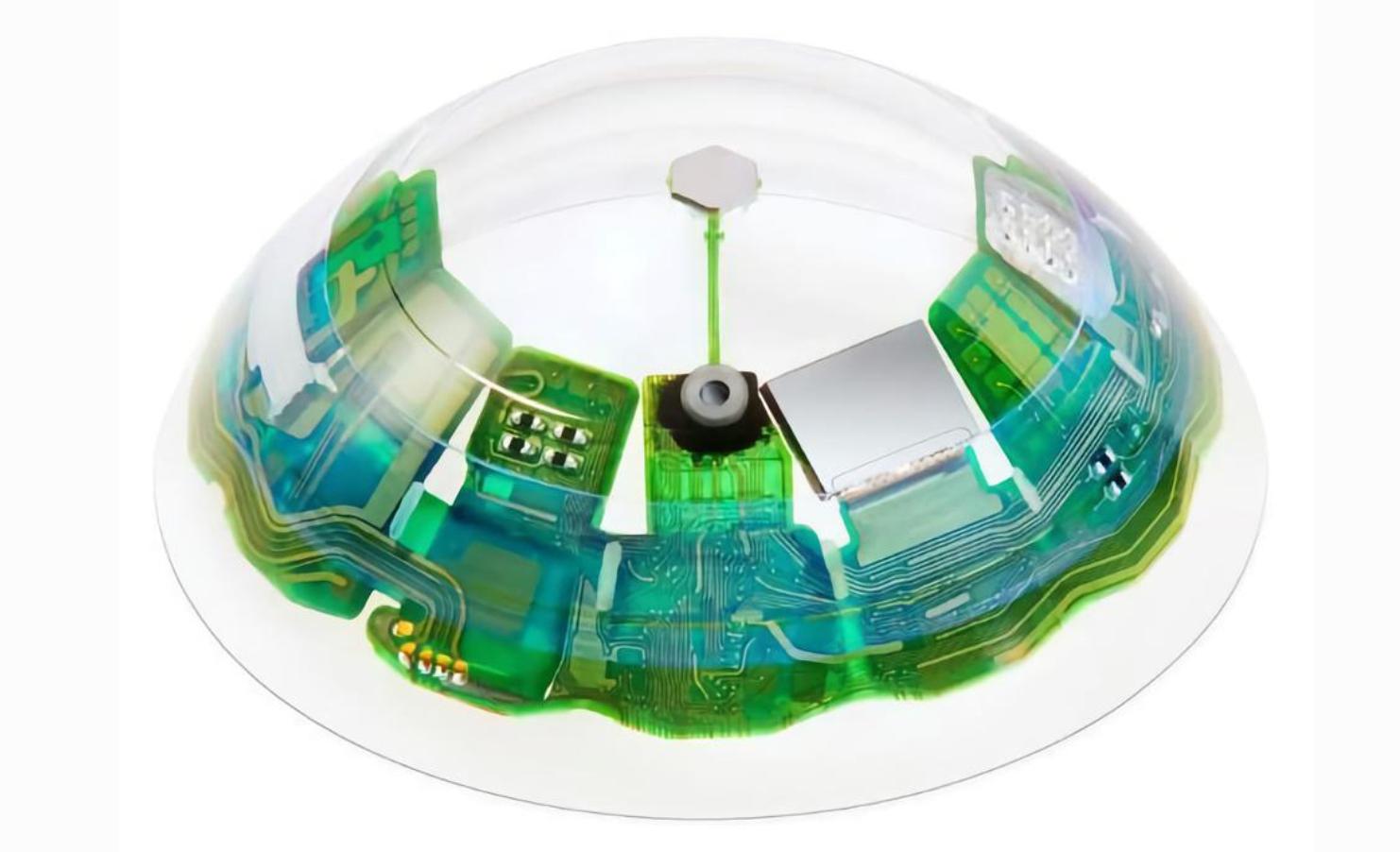In-eye testing begins for first AR-based, smart contact lens
Mojo Vision's CEO Drew Perkins announced last week that he became the first, and currently only, person to wear the latest prototype of Mojo Lens, an augmented reality-based contact lens.
The latest prototype of the Mojo lens features updates such as a micro-LED display and medical-grade micro-batteries, as well as new hardware and technologies embedded directly into the lens. Image property of Mojo Vision

The world’s first augmented reality (AR) contact lens is one step closer to being accessible for everyday wearers.
Mojo Vision announced earlier this year the launch of its latest prototype for the Mojo Lens.
The smart contact lens features updates such as a micro-LED display and medical-grade micro-batteries, as well as new hardware and technologies embedded directly into the lens—including eye tracking, communications, and software.
More recently, CEO Drew Perkins shared in a June 28 company blog post that he received the “first ever on-eye demonstration” of the lens itself. As currently the first and only person to wear the lens, he has done so wearing only one lens at a time, for one hour at a time.
The fully self-contained Mojo lens prototype—originally launched in 2020—includes the following industry-first technologies, Perkins wrote:
- a 14,000 pixel-per-inch MicroLED display measuring > 0.5 mm in diameter with a 1.8-micron pixel pitch (the world’s smallest, densest display ever create for dynamic content);
- custom application-specific integrated (ASIC) design incorporating a 5 GHz radio and ARM Core M0 processor that allows for transmission of sensor data off the lens and stream AR content to the MicroLED display;
- custom-configured accelerometer, gyroscope, and magnetometer that provides continuous eye movement tracking so AR imagery is held still as the eyes move;
- a proprietary power management system comprising of medical-grade micro-batteries and an in-house developed power management integrated circuit;
- an intuitive interface based on eye tracking that enables a user to access content and select items without hand or gesture-based controllers—just natural eye movement.
With the current prototype, a user must wear the ARM processor around their neck—allowing for a wireless relay of information to the lens and back to computers that track eye movement—as well as a hat with an integrated antenna for improved connectivity.
While testing is being done with one lens in one eye, the company’s next goal is for two lenses to operate as a pair, enabling a wearer to see in 3D (similar to virtual reality and AR).
In a recent interview, Perkins said that other executives at the company will be trying out the hardware next. However, the early stages are focusing on simply getting the hardware to operate properly. "We spent lots of time just validating and calibrating the radio, to make sure the radio is working," he said in the interview with CNET. "We're not doing extended-time testing yet. We'll get there."
The latest advancements and continual testing are part of Mojo Vision’s eventual goal to submit the lens to the FDA for market approval, according to Perkins.
"To accomplish this, we will conduct several clinical studies to test capabilities and provide feedback on software and apps,” he stated in the June 28 blog post.
Newsletter
Want more insights like this? Subscribe to Optometry Times and get clinical pearls and practice tips delivered straight to your inbox.